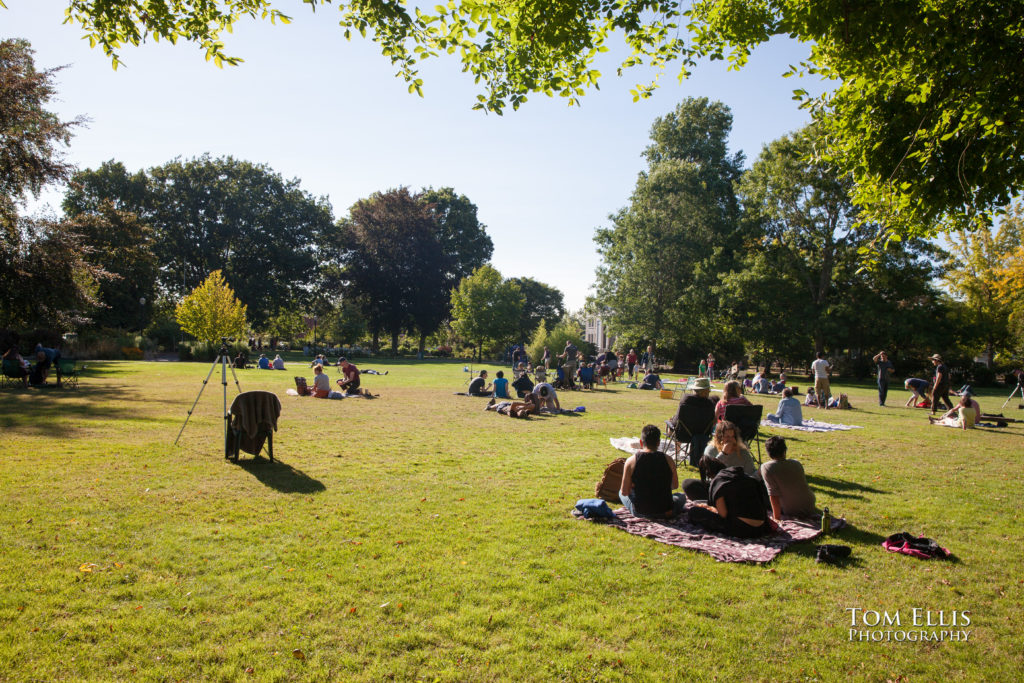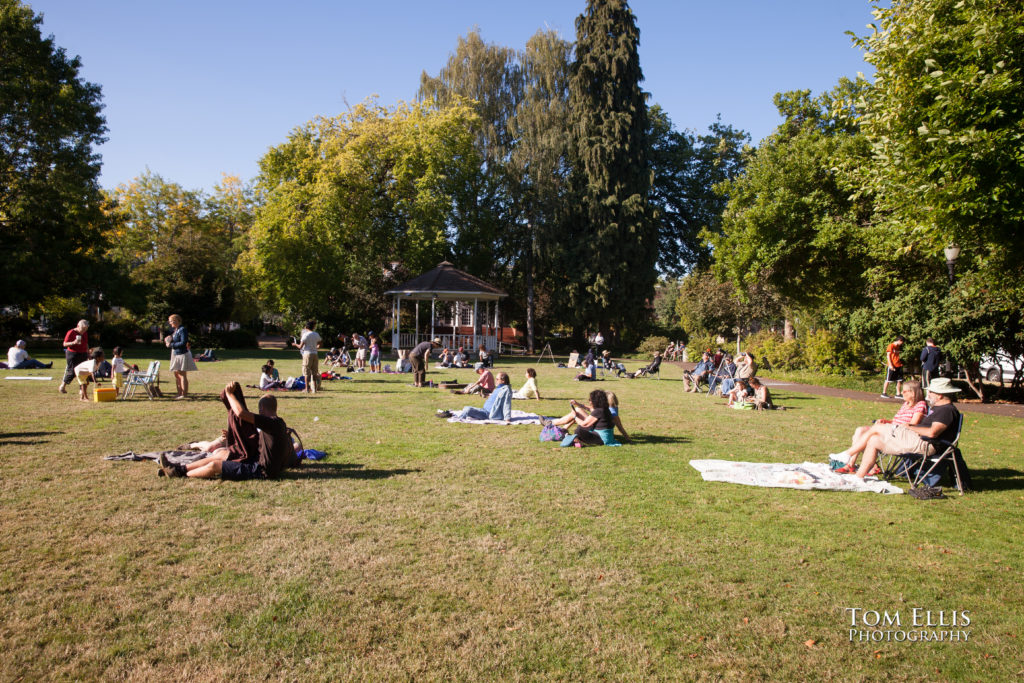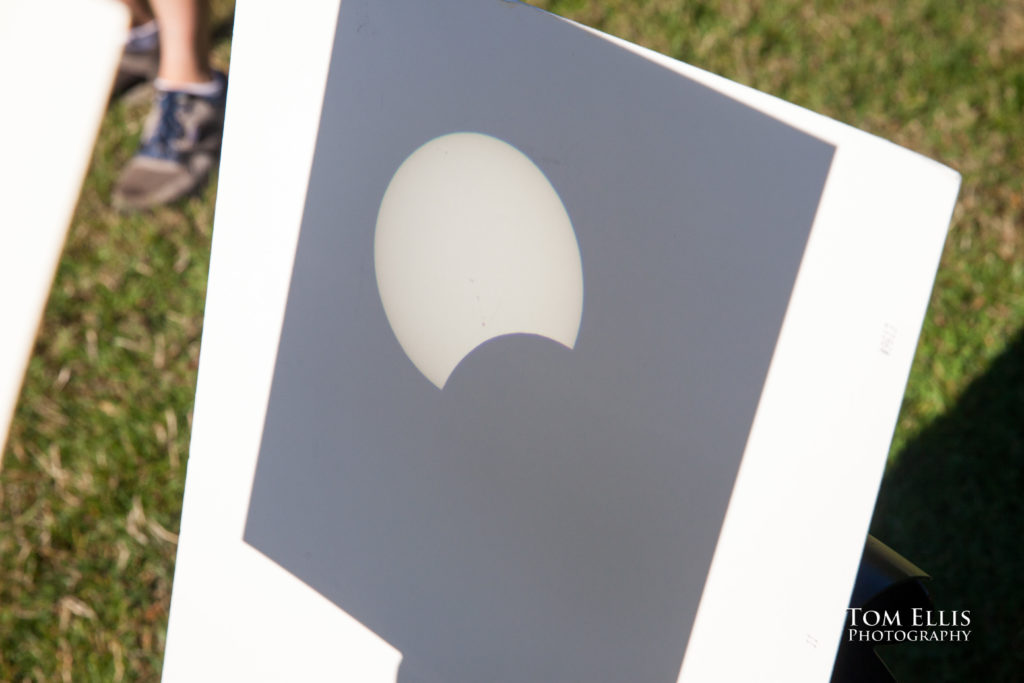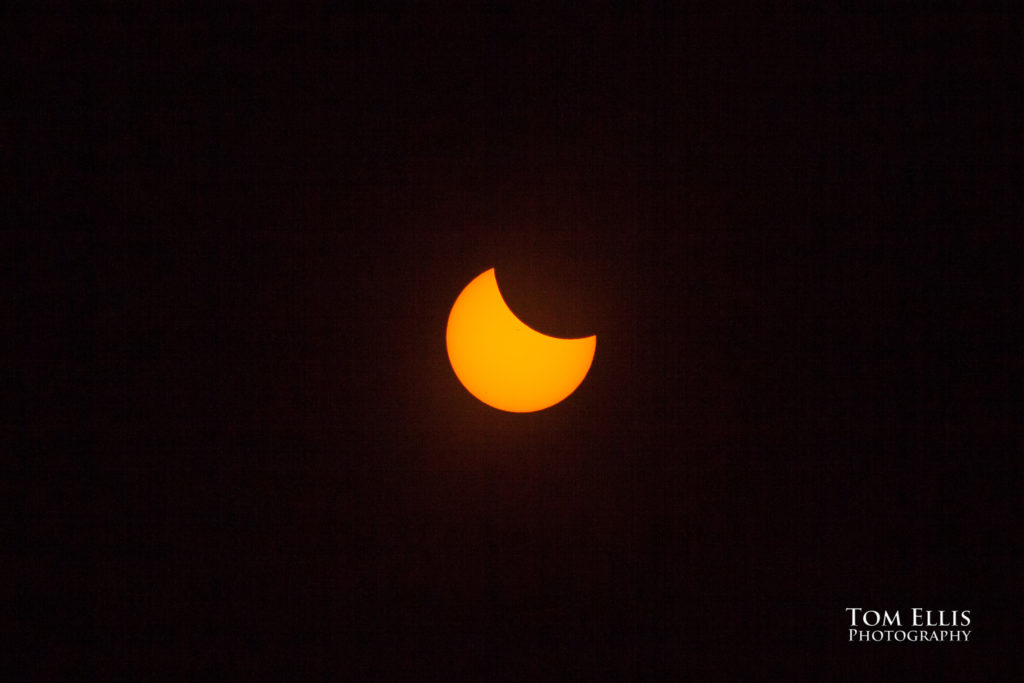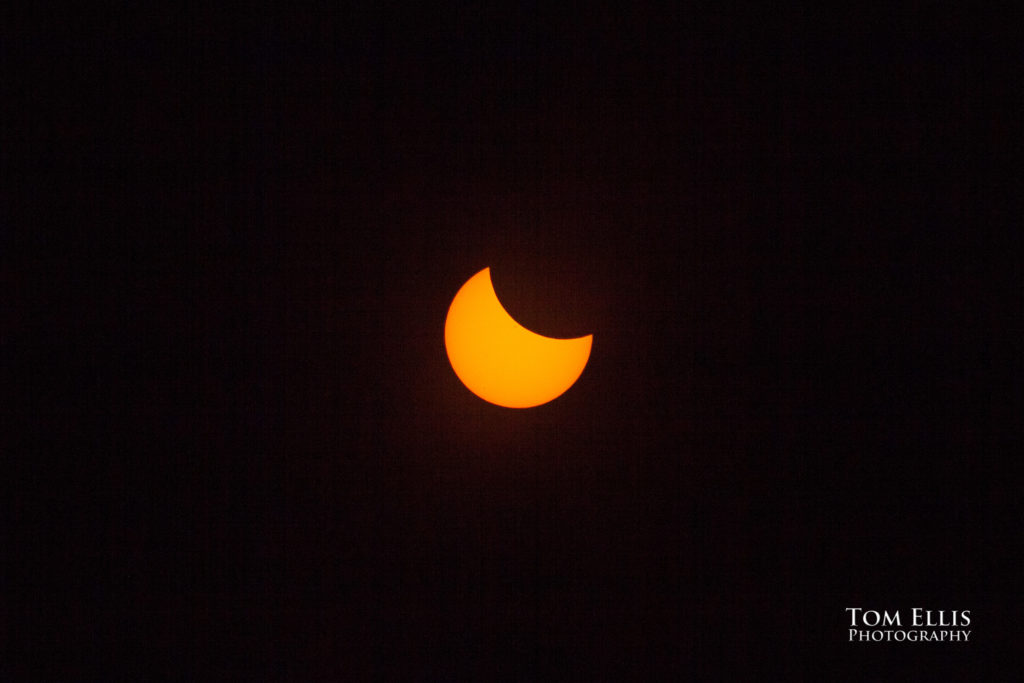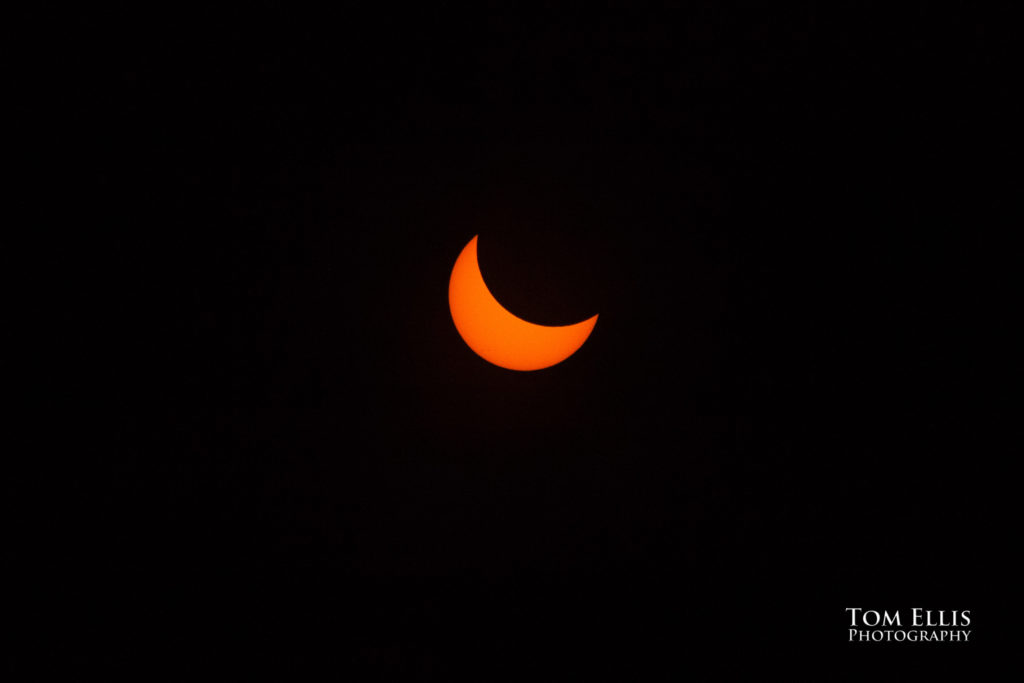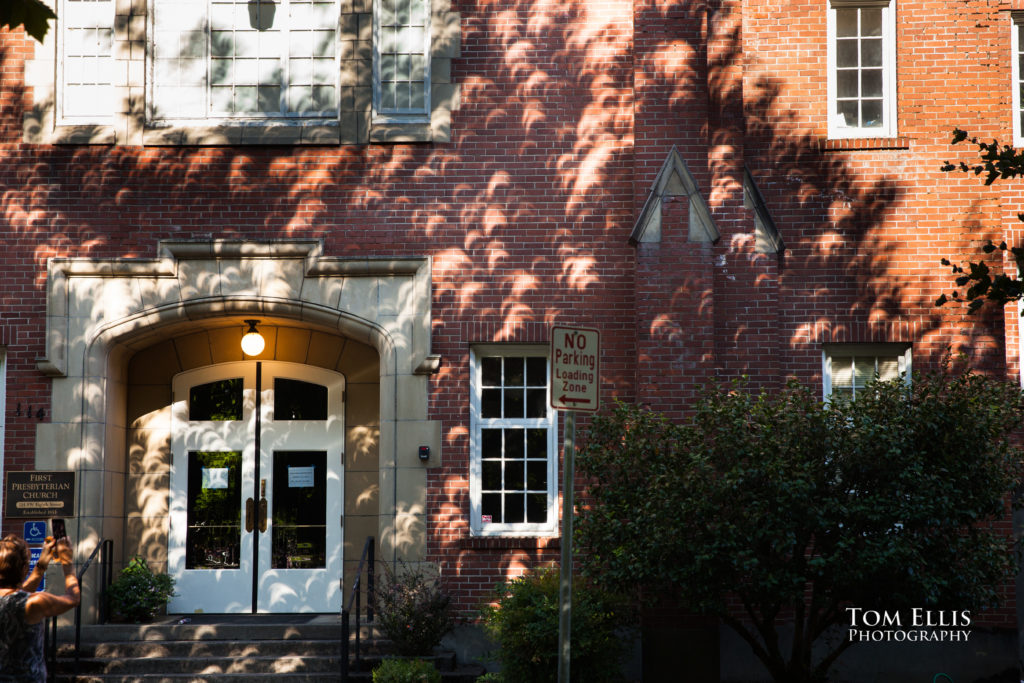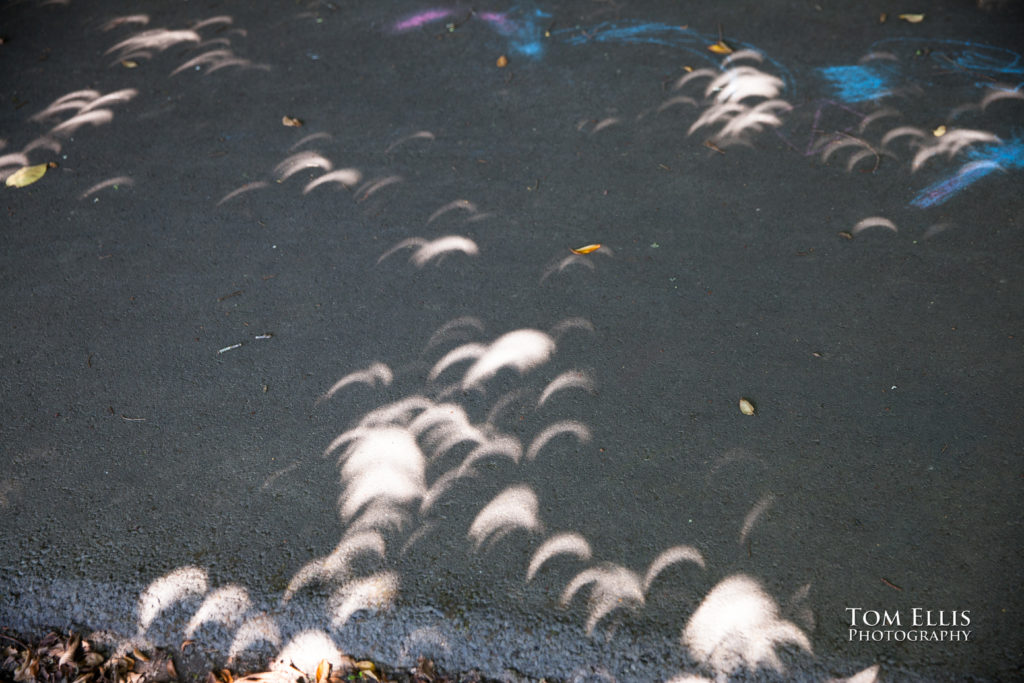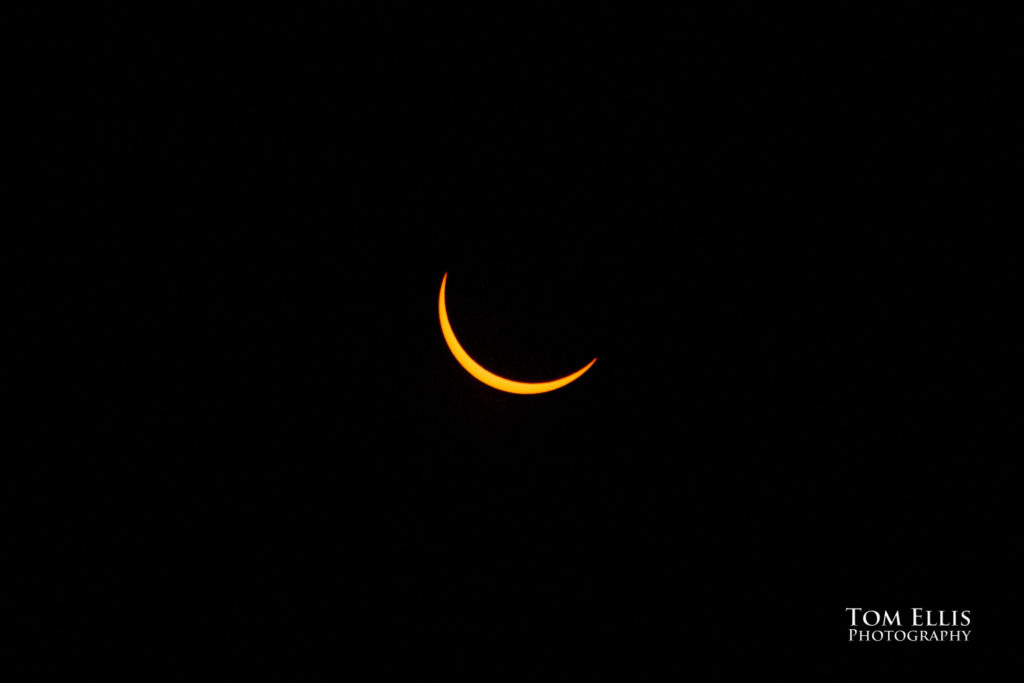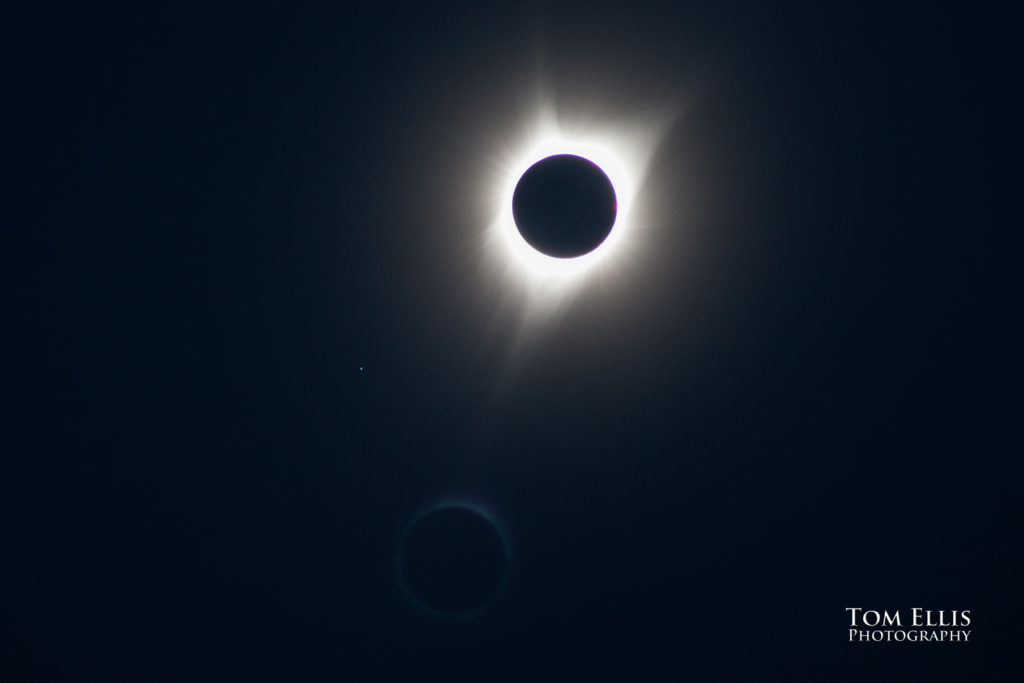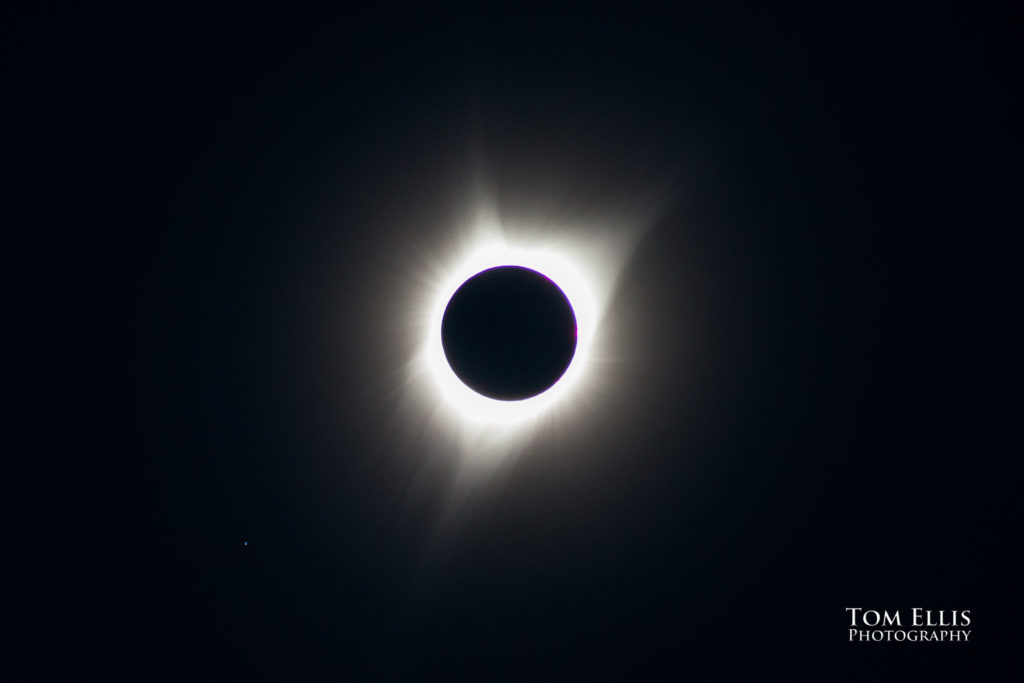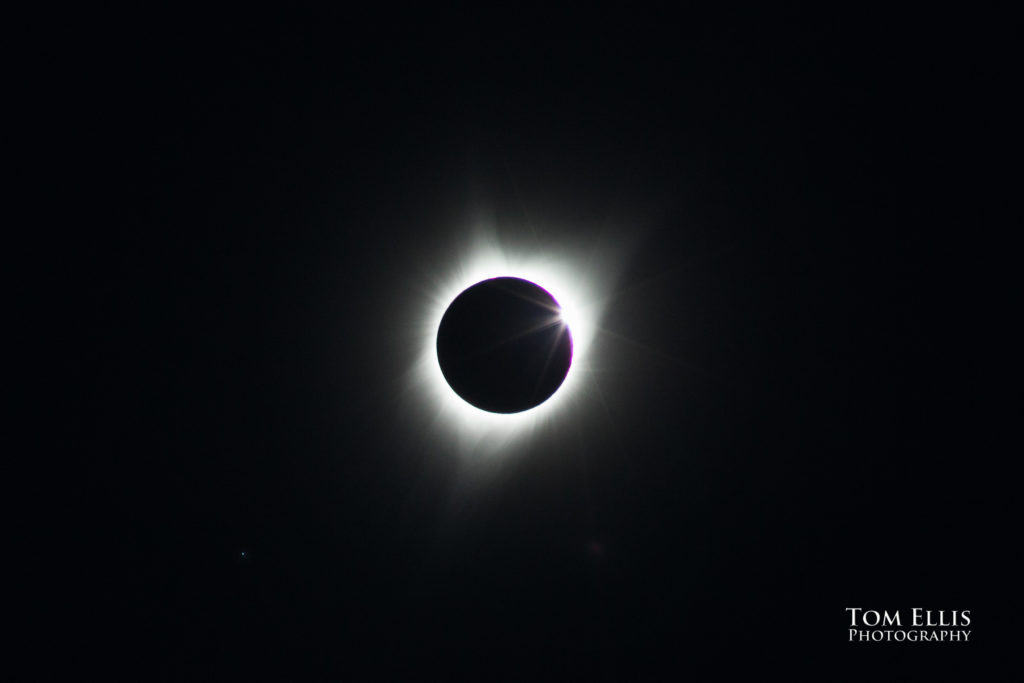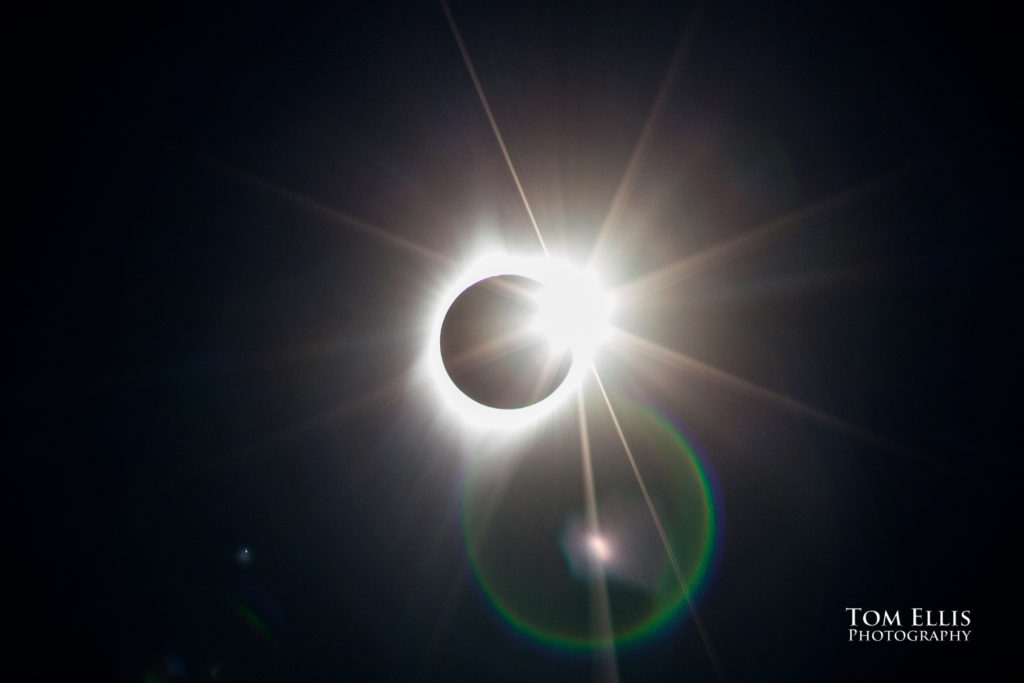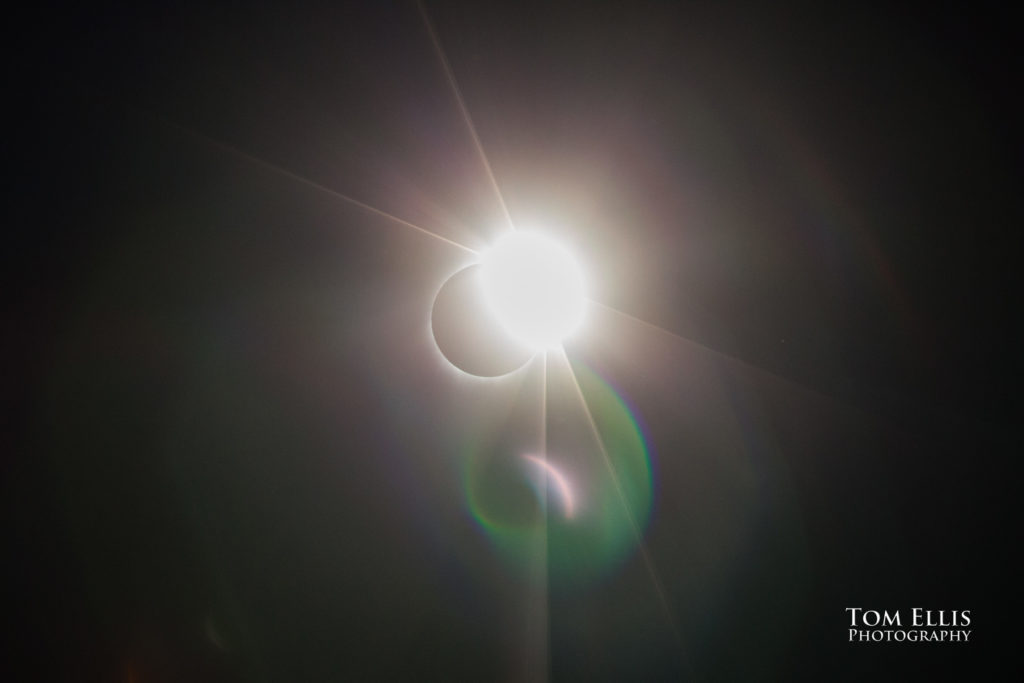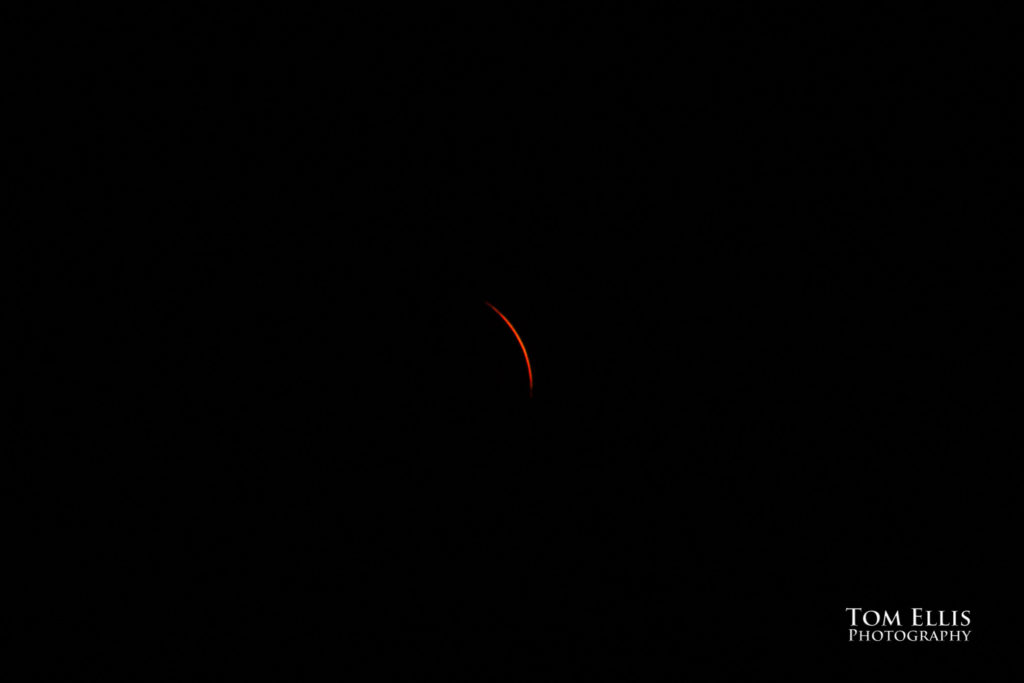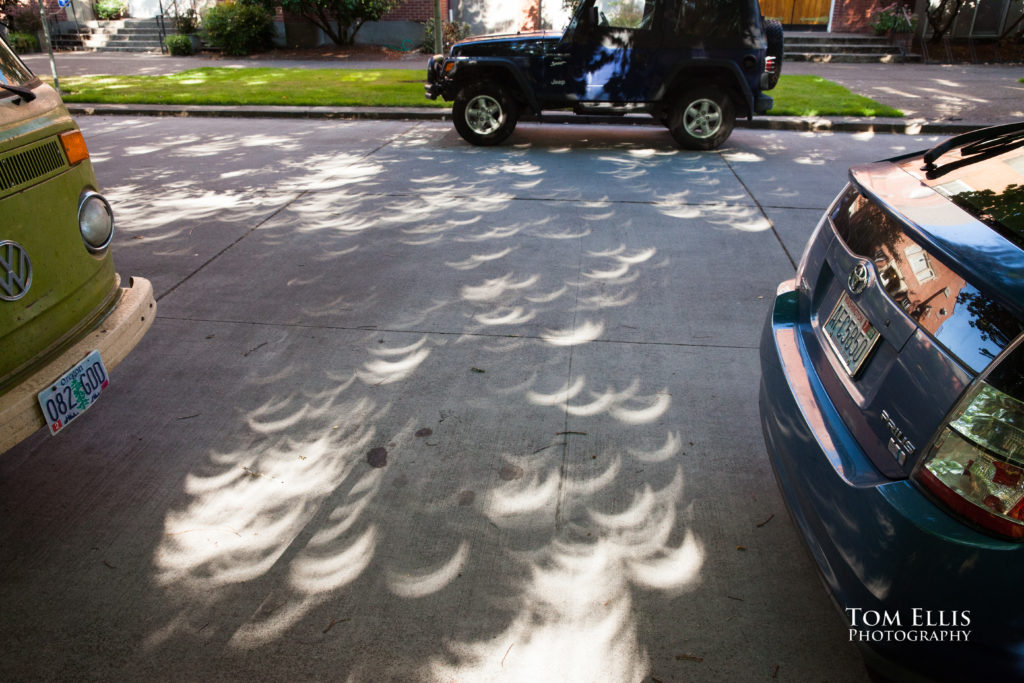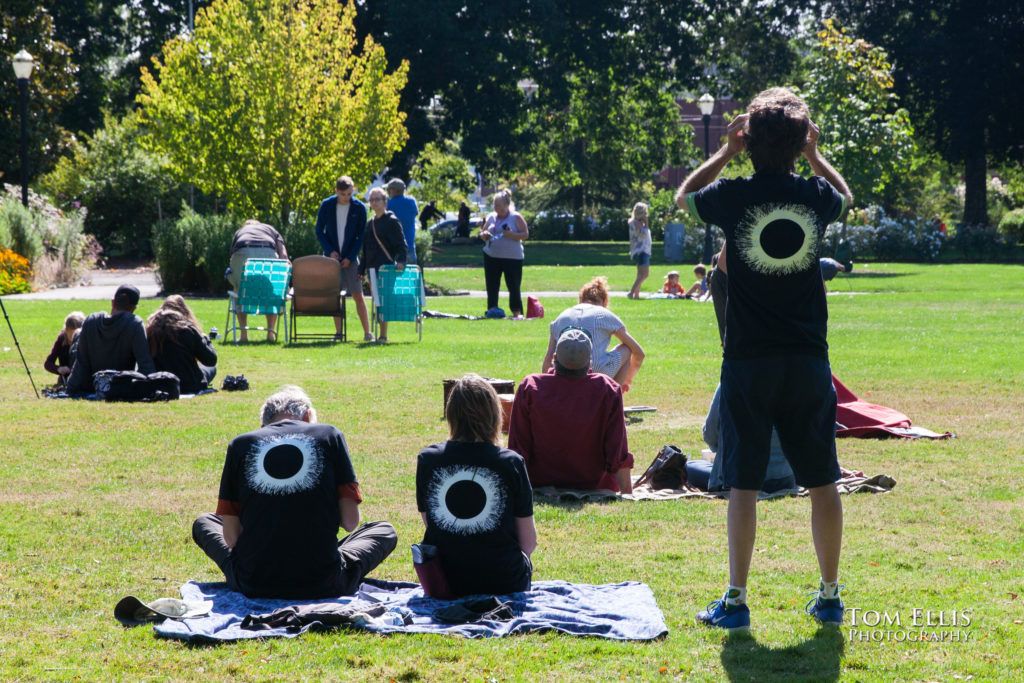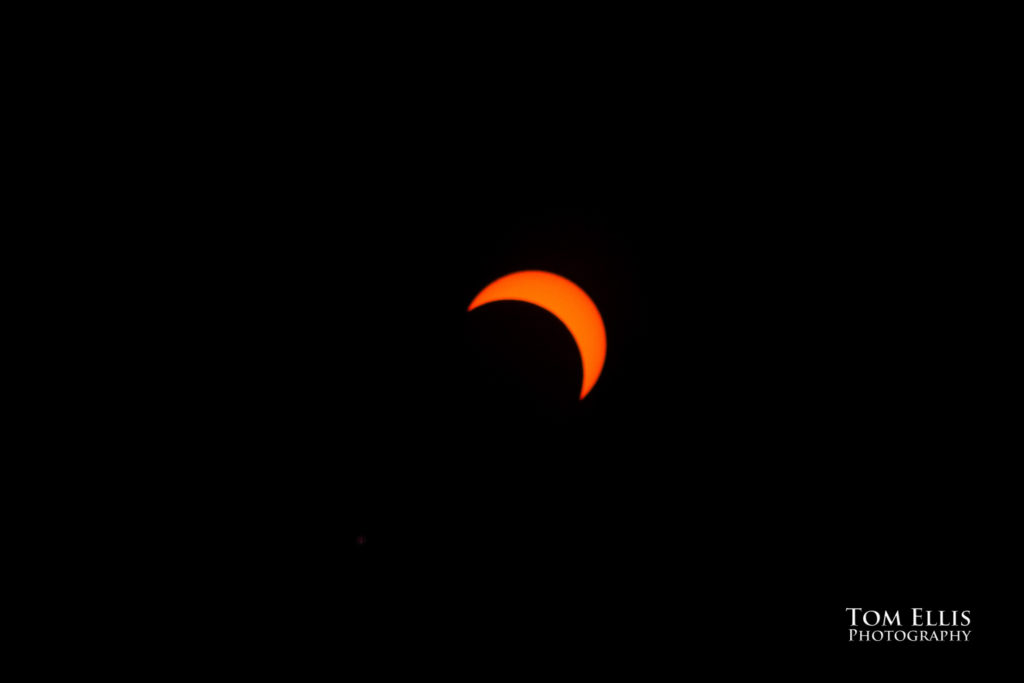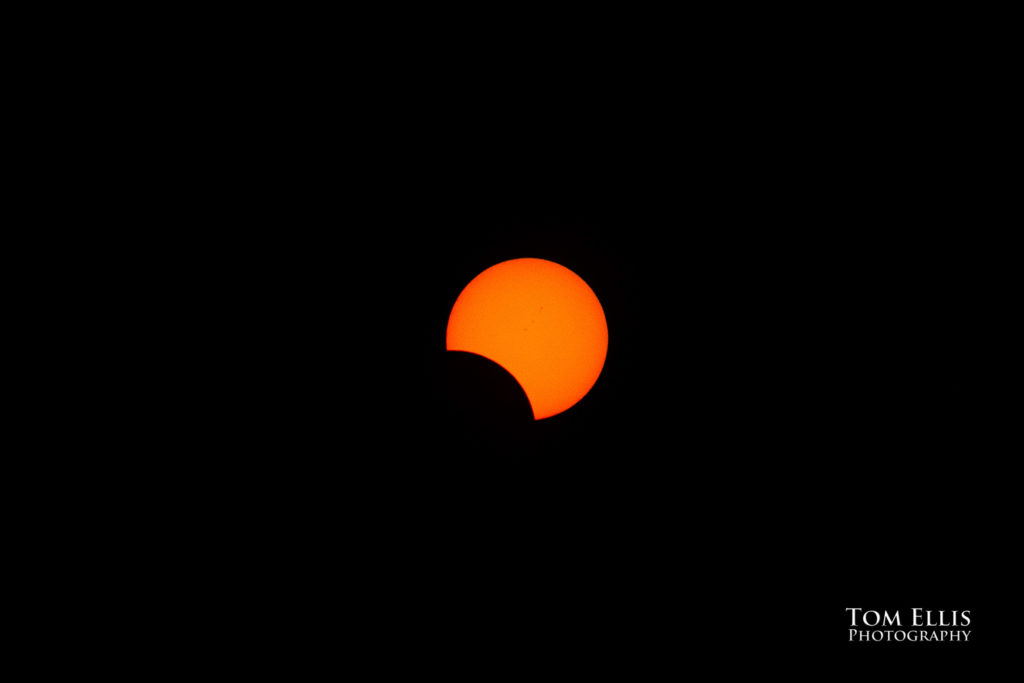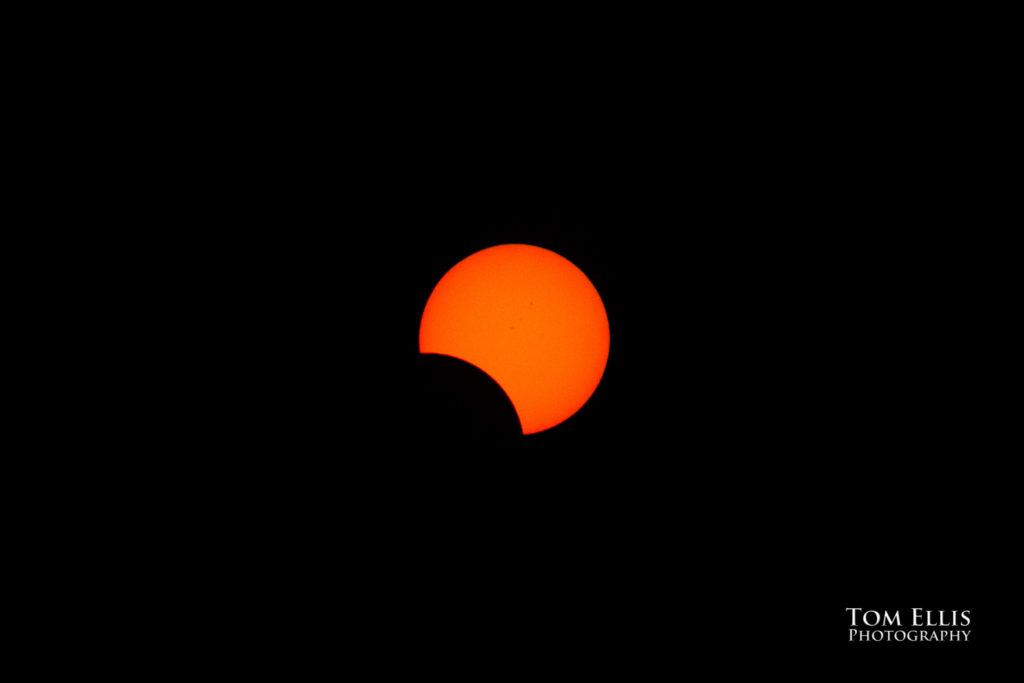Eclipse 2017 in Corvallis, Tom Ellis Photography
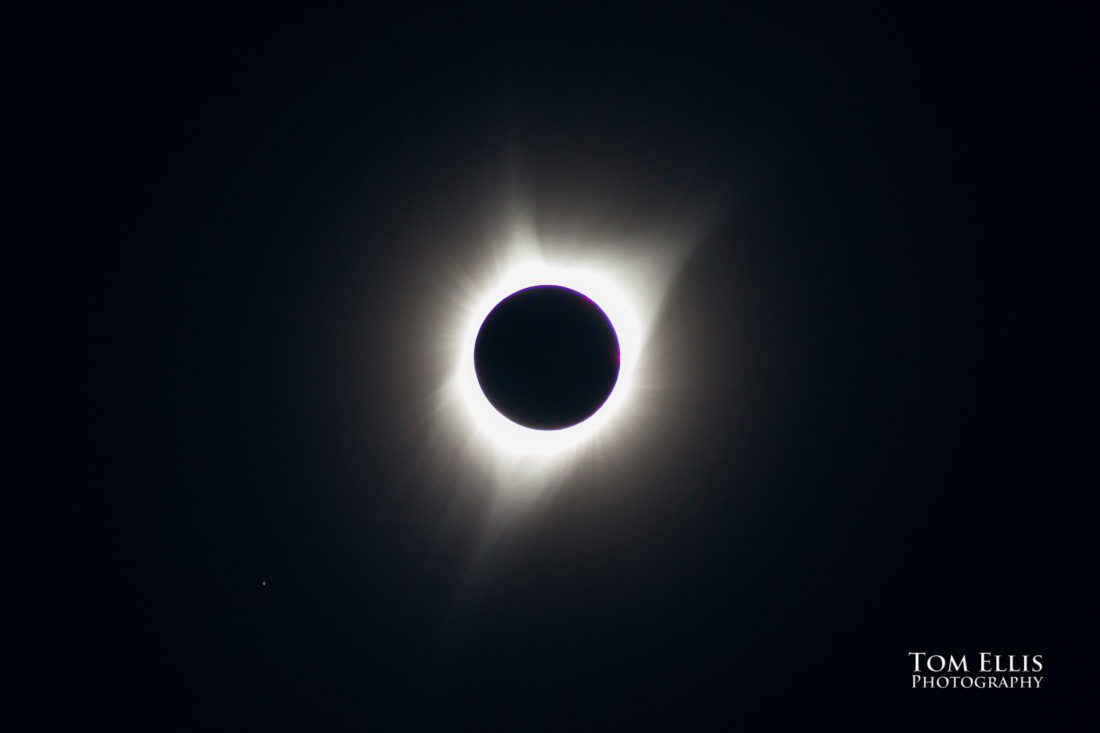
Eclipse 2017 in Corvallis, Tom Ellis Photography
Photos of the August 21, 2017 Solar Eclipse
Yesterday I was extremely fortunate to be able to view and photograph the total solar eclipse. When I first heard about the coming eclipse sometime last spring, I thought that it would be a lot of fun to travel to a location where it would be possible to actually see totality, or when the sun is totally blocked by the moon. Where I live in Bellevue the sun would be ~92% covered (which still sounds like a lot!) but I really wanted to experience totality if I could figure out a way to do it.
But time passed, and my plans were going nowhere. I thought that car-camping somewhere near Madras in Central Oregon would be a good plan, but the more research I did the more clear it was that a LOT of people were going to be coming to Oregon for the eclipse, and that travel in the days immediately beforehand would be difficult.
I had pretty much given up on making the trip, until I realized that I have a nephew Trevor who lives with his wife Aurora in Corvallis, which is well inside the zone of totality. So a few days before the eclipse I called to see if they might have any space for me to spend Sunday night before the eclipse. I was sure that they would have a bunch of friends who had come up with the same idea, and that there would be no place for me. So I was shocked to learn that no one else had contacted them about mooching a place to stay, and that it would be possible for me to stay there on Sunday, and even longer if I wanted to arrive earlier to try to avoid the very heavy traffic that was predicted.
But now I discovered that my very late planning was going to make it difficult to impossible to find the filter that I needed for my camera to allow me to take photos during the early and late phases of the eclipse. No filter would be needed to photograph totality, since the sun would be completely blocked by the moon. But for the rest of the event it was critical to have a filter similar to the glasses that many of us bought to allow us to view the eclipse without suffering permanent eye damage, as well as possibly destroying the sensor in my rather expensive camera.
I tried all of the local camera stores and had no success, and anything I could find online would not get to me in time. I researched online for other possibilities to make my own filter, but the only real alternative I could find was using special welders’ glass, and it was all gone everyplace I tried. Completely my own fault, if I had been able to make my plans a few weeks earlier I would have had no problems, but I was just starting too late.
So I decided that since I would be able to see the entire eclipse using the glasses that my wife had been smart enough to buy well in advance, and that I would still be able to take photos once the eclipse reached totality, I would go ahead and make the trip. To further complicate things I had a wedding on August 19, so the earliest I could make the drive to Corvallis would be August 20. I had already decided that I was going, regardless of traffic conditions, so I got up early on Sunday morning and started south. I was pleasantly surprised to discover that traffic was actually very light, and I was able to make the drive in a bit over 4 hours, which is pretty good.
The day of the eclipse, Trevor and Aurora got up early to meet with Aurora’s parents, and to then go to an eclipse viewing brunch/party at a local restaurant. I was not yet sure exactly where I wanted to set up to view the event, but I found a very nice park just a few blocks from Trevor and Aurora’s house where several dozen people were already setting up at 8AM, and decided there was no point in looking further. I set up my tripod and camera, and then started to look around the park to see who all was there, and what kind of gear they had brought to view the eclipse. One man had a reflector telescope that was very powerful, and he had a special filter that allowed him to look at the sun without fear of hurting his eyesight. He let me look through the scope at the sun, and it was amazing, the sun filled the entire viewing area, and I could clearly see sunspots on several places on the sun. Another man had set up a very fancy version of a pinhole camera, using a spotting scope and projecting onto a piece of white board. Though it was an indirect method of looking at the sun it did not require any kind of filtration, and on the image projected on the board the same sunspots were visible.
A couple of other people had cameras similar to mine set up on tripods, and I talked with them about how they planned to shoot the eclipse. They all had the necessary filter to take photos of the eclipse before/after totality, and were busy trying to figure out the best exposure. Because the run up to totality would be more than 60 minutes, there was plenty of time to get the correct exposure for non-totality photos. But no one really knew just what they would do during totality, with the consensus being lots of bracketing and a bit of prayer being the plan. With only 90 seconds of total coverage of the sun by the moon, there would not be much time to screw around.
I mentioned to one of the other photographers that I had been unable to find any filter for my camera, and asked when and where he had found his. He told me that he had found a sheet of the same material used in the eclipse glasses on eBay a few weeks before, and used that to build a filter. And then he said something that suddenly made the whole trip much better – he had extra filter material, and I was welcome to use it if I wanted! He even had some electrical tape. But he had no way to cut the filter material down to a useable size. Boy, was I glad that I had my trusty little Swiss Army knife in my pocket, complete with a pair of scissors! I took the filter material and tape back to my car, and in a few minutes my lens was now ready for shots of the naked sun.
Most of the people at the park did not have any way to view the event other than their eclipse glasses, so I offered anyone who wanted to a chance to look through my camera for a more magnified view. Unfortunately my biggest lens is only 300mm, which is equivalent to a 6x telescope. Better than nothing, but more power would have been really nice.
Here are some photos from the next hour or so as the eclipse progressed, along with commentary to explain them. VERY IMPORTANT – if you click on individual photos you will be able to see a much larger version, with better detail. Try it and see!
The two photos above show the park and “watchers” maybe an hour before the eclipse began. I’d guess that somewhere ~ 100 people were there at the peak of the eclipse.
Here is the viewing area of the fancy pinhole camera I described above, about 10 minutes into the eclipse. If you look just above the crescent made by the moon you can see several sunspots, and a few more dimly at the top left of the “sun”.
The eclipse after ~20 minutes, shortly after I made my filter allowing me to take photos. At this spot the larger sunspots are already mostly covered by the sun, but if you click on the photo for a larger version you should be able to see faint sunspots in the lower left, and one very near the crescent.
A bit further along, sunspots visible if you look closely.
This is ~30 minutes into the eclipse.
Realizing the the eclipse was moving slowly I started taking photos every 5-10 minutes and otherwise was talking with the other people there to see the event. At this point I noticed a very cool event, that the leaves of the trees were acting as pinhole cameras and letting light through to from multiple views of the eclipse. This was ~50 minutes into the eclipse, so the crescent is getting quite small. The crescents were on the street, parked cars, this building, pretty much any surface that was shaded by the trees.
Here is the final photo I took before totality, maybe 1-2 minutes before the moon completely blocked the sun
About 15 seconds after totality began. I had a little trouble getting my home-made filter loose, more difficult that I expected largely because it was completely dark and I could not see what I was doing! If you look to the left below the sun, you can see a small white dot; that is the planet Mercury. Mars, Venus and Jupiter were also visible in the sky but were outside of my viewfinder. The “ghost sun” at the bottom of the photo is likely lens flare caused by shooting straight into the bright corona surrounding the moon.
Another shot maybe 15 seconds later. Mercury still very visible. I was bracketing my exposures and am only showing the best of the exposures.
The photo above and the two immediately below were all taken within the space of ~1/2 second, just as the sun began to emerge from behind the moon. These are my favorite photos from the day. Crazy how fast the ambient light went from completely dark to quite light, literally a second or two!
Here is how little of the sun was showing just after taking the photos above this one. It took me a couple seconds to get the filter back in place, it was now too bright to view the sun with no filtration without risking possible eye damage.
More crescents, this time all post-totality. Notice how the direction of the crescent are reversed from earlier. Maybe 5 minutes after totality.
The people who were right next to me throughout the eclipse. Very nice group, and I loved their custom-made T-shirts!
The eclipse comes to an end over these photos as the moon slowly moves out of the line of the sun. Notice the larger sunspots that were already covered in most of the photos I took before totality.
